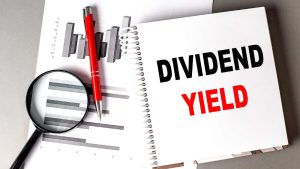How much do you need to invest to target a £1,000-a-month second income?


Investing in the stock market can be a great way of generating a second income. And investors with time on their side might be surprised at what they can achieve.
According to a widely held principle, the amount needed to target a £1,000 monthly income is around £300,000. But I think itâs worth looking at some of the assumptions behind that belief.
The 4% rule
According to a 1998 study, you can safely withdraw 4% of an investment each year without the value of the portfolio going down over time. Thatâs where the £300,000 figure comes from.
Itâs worth noting that the study is based on a portfolio thatâs around 60% stocks and 40% bonds. The idea is that the equities provide growth while the fixed income protects against volatility.Â
Iâm not saying thatâs a bad way to set up a portfolio, but not every investor is in the same situation. And the UK, in particular, has some relatively stable dividend stocks.
My own view is that the safe withdrawal rate for a portfolio thatâs tilted towards UK shares might be slightly higher. But I donât think 4% is a bad working assumption at all.
The road to £300,000
The long-term average return from the FTSE 100 is around 6.5% a year. Returns from stocks are always uncertain, but I think thatâs a good assumption to work with.
Over 30 years, that return is enough to turn a monthly investment of £300 into £300,000. And someone who follows this path invests a total of £108,000 over three decades.
By contrast, an investor whoâs in a position to deploy £45,000 today can achieve the same result in the same time. And thatâs a big difference in terms of the overall amount invested.
The point is that starting sooner can dramatically reduce the overall amount someone needs to invest. It doesnât have to be the full amount on day one, but being early is a clear advantage.
A FTSE 100 dividend stock
One FTSE 100 dividend stock thatâs always on my radar is Unilever (LSE:ULVR). It comes with a 3.25% yield and the firm has a strong record of increasing its shareholder distributions.
Even in the most durable businesses, however, growth is never guaranteed. And the company has to contend with the risk of customers trading down to cheaper alternatives in a recession.
Unilever, however, has one of the best brand lineups around. And this puts it in a strong position to negotiate with retailers for space in stores to stay at the front of consumer minds.
The firmâs latest report also indicates that this is going well. Underlying sales growth came in at just under 4% and most of this coming from price increases is a positive sign for margins and profits.
Investing rules
Itâs impossible to say exactly how much someone needs to invest to earn a specific return when it comes to stocks. But they can be great assets for passive income investors.
I own Unilever shares in my portfolio and I think I have a decent chance of getting more than 4% a year over time via dividends. And on that basis, I think itâs worth considering right now.
The post How much do you need to invest to target a £1,000-a-month second income? appeared first on The Motley Fool UK.
Should you invest £1,000 in Unilever right now?
When investing expert Mark Rogers has a stock tip, it can pay to listen. After all, the flagship Motley Fool Share Advisor newsletter he has run for nearly a decade has provided thousands of paying members with top stock recommendations from the UK and US markets.
And right now, Mark thinks there are 6 standout stocks that investors should consider buying. Want to see if Unilever made the list?
More reading
- I asked ChatGPT for 5 world-class dividend shares for a retirement portfolio. Hereâs what it gave me
- These 3 FTSE 100 super-shares pay £18.6bn a year in passive income!
- 2 FTSE 100 shares near 52-week lows that warrant attention today
- If markets crash, I’m buying these 2 UK shares
- 2 Warren Buffett tips I’m following about investing during high inflation
Stephen Wright has positions in Unilever. The Motley Fool UK has recommended Unilever. Views expressed on the companies mentioned in this article are those of the writer and therefore may differ from the official recommendations we make in our subscription services such as Share Advisor, Hidden Winners and Pro. Here at The Motley Fool we believe that considering a diverse range of insights makes us better investors.








